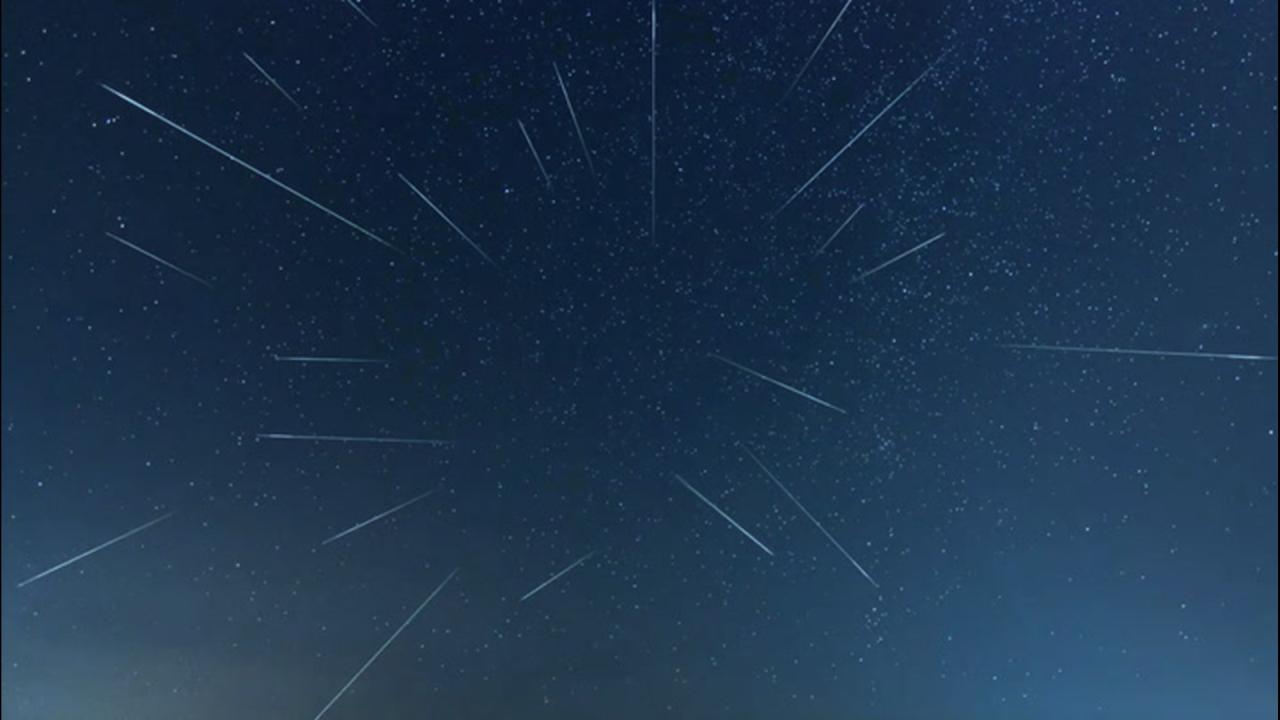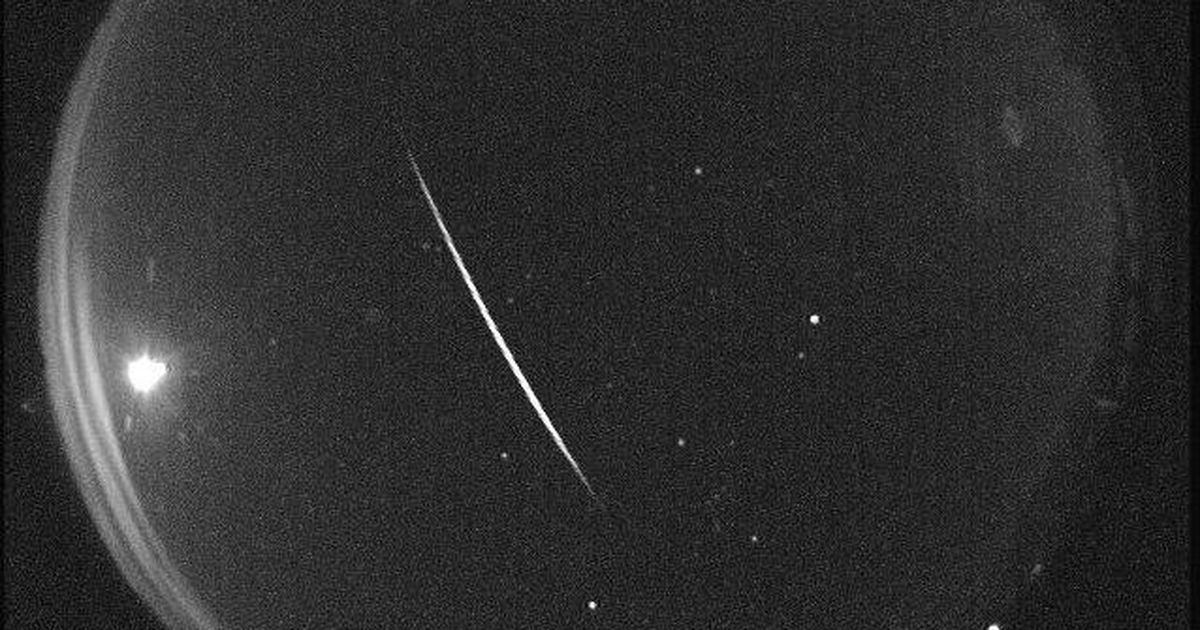Quadrantid meteor shower to light up skies – here’s the best way to witness this celestial spectacle! Get ready for a dazzling display as the Quadrantids peak, offering a chance to see dozens of shooting stars per hour under the right conditions. This guide will walk you through everything you need to know, from finding the perfect viewing spot to capturing stunning photos.
We’ll cover optimal viewing times and locations worldwide, considering factors like light pollution and weather. Learn about the best observing techniques, whether you prefer naked-eye viewing or using binoculars or telescopes. Discover the science behind the Quadrantids, their origin, and what makes them unique. Plus, we’ll give you a step-by-step guide to photographing the shower and essential safety tips to ensure a safe and memorable experience.
Peak Viewing Times and Locations for the Quadrantid Meteor Shower
The Quadrantid meteor shower is known for its intense bursts of activity, but its short peak makes precise timing crucial. Optimal viewing depends on your location and the interplay of factors like light pollution and weather. The following details will help you maximize your chances of witnessing this celestial event.
Peak Viewing Times and Locations by Region
The peak of the Quadrantid meteor shower is typically very brief, lasting only a few hours. The exact peak time varies based on your location due to differences in time zones. For example, observers in North America will experience the peak at a different time than those in Europe or Asia. The following table provides a general guideline.
Remember to check local weather forecasts before heading out.
| Location | Peak Time (Local) | Expected Meteor Rate (under ideal conditions) | Light Pollution Level (example) |
|---|---|---|---|
| New York City, USA | ~Pre-dawn hours, January 4th | 60-120 meteors per hour | High |
| London, UK | ~Pre-dawn hours, January 4th | 60-120 meteors per hour | Medium |
| Tokyo, Japan | ~Morning hours, January 4th | 60-120 meteors per hour | High |
| Sydney, Australia | ~Daytime hours, January 4th | Not visible during peak | Medium |
A map showing optimal viewing locations would highlight areas with minimal light pollution, ideally far from major cities. Dark sky parks and rural areas are generally best. The further away from city lights you are, the more meteors you’ll be able to see. Moonlight can significantly impact visibility; a new moon or a thin crescent moon is ideal.
Observing Techniques and Equipment
Successfully viewing the Quadrantid meteor shower involves preparation and choosing the right approach. While naked-eye viewing is perfectly sufficient, using additional equipment can enhance the experience.
Best Practices for Meteor Shower Observation, Quadrantid meteor shower to light up skies – here’s the best way to

The key to successful meteor shower viewing is finding a dark location away from city lights. This minimizes light pollution, allowing you to see fainter meteors. Give your eyes at least 20-30 minutes to adjust to the darkness. Lie down on a blanket or reclining chair for comfortable viewing. Dress warmly, as temperatures can drop significantly at night.
Using Binoculars or Telescopes
While naked-eye observation is ideal for capturing the wide field of view necessary to spot meteors streaking across the sky, binoculars or telescopes might help in spotting fainter meteors. However, their narrow field of view means you might miss more meteors compared to naked-eye viewing. Binoculars are a better choice than telescopes for meteor shower viewing due to their wider field of view.
Essential Items Checklist
- Warm clothing (layers are best)
- Blanket or reclining chair
- Red light flashlight (to preserve night vision)
- Hot drinks in a thermos
- Snacks
- Star chart or app (optional)
Understanding the Quadrantid Meteor Shower

The Quadrantids are unique among meteor showers due to their origin and short peak. Understanding these aspects helps appreciate the spectacle.
Want to catch the awesome Quadrantid meteor shower? Find a dark spot, away from city lights, and lie back to enjoy the show! Before you do, though, if you’re thinking about a career change, maybe check out the surgical tech program admission requirements and prerequisites – it’s a rewarding field. Then, after you’ve planned your future, get back to stargazing; bundle up warm and prepare for a celestial treat!
Origin and Parent Object
Unlike most meteor showers that originate from comets, the Quadrantids’ parent body is believed to be asteroid 2003 EH1, or possibly a “rock comet.” This asteroid is believed to be a fragment of a larger comet that broke apart centuries ago. The debris field from this object causes the annual meteor shower.
Comparison to Other Meteor Showers
The Quadrantids are known for their high meteor rates during their short peak, which makes them unique compared to other showers like the Perseids or Geminids, which have longer periods of high activity. Quadrantid meteors are often bright and fast, with some exhibiting persistent trains (glowing trails that remain visible for a short time after the meteor has passed).
Speed and Brightness
Quadrantid meteors typically enter the Earth’s atmosphere at a speed of around 41 kilometers per second (approximately 92,000 mph). Their brightness varies, with some being quite faint, while others can be quite brilliant, even leaving persistent trails.
Potential Hazards
- Cold weather: Hypothermia is a risk in cold climates. Dress warmly in layers.
- Dark locations: Choose a safe, well-lit area to access your viewing spot, and be aware of your surroundings.
Photography and Visual Representation
Capturing the Quadrantids on camera requires some planning and technical knowledge. The following steps will help you create stunning images.
Photographing the Quadrantid Meteor Shower
-
Use a DSLR or mirrorless camera with a wide-angle lens (e.g., 14mm to 35mm).
Want to catch the Quadrantid meteor shower? Find a dark spot away from city lights for the best viewing. While you’re bundled up, it’s worth noting that a completely different kind of celestial event is happening: Check out this article about Viral disease HMPV is on the rise among kids in China — what is it?
for a fascinating contrast. Then, get back to stargazing – remember to bring hot chocolate!
-
Set your camera to manual mode (M).
Want to catch the awesome Quadrantid meteor shower? Find a dark spot away from city lights, lie back, and let your eyes adjust. While you’re waiting, check out this amazing game recap: PULISIC IS THE MVP FROM JUVENTUS v AC MILAN , then get back to stargazing! Remember, patience is key for a great meteor shower viewing experience.
-
Use a high ISO (e.g., 1600-3200 or higher, depending on your camera).
-
Set a wide aperture (e.g., f/2.8 or wider).
-
Use a long exposure time (e.g., 15-30 seconds or longer).
-
Mount your camera on a sturdy tripod to avoid blurry images.
-
Use a remote shutter release or camera’s self-timer to avoid camera shake.
-
Focus on infinity.
-
Experiment with different settings to find what works best for your camera and conditions.
-
Compose your shot to include the radiant point (the apparent origin of the meteors) if possible.
Long-exposure images will capture meteor trails as streaks of light against the night sky. The radiant point will appear as the point from which most meteors seem to emanate. Visual representations can emphasize the shower’s intensity by depicting numerous meteor trails converging towards the radiant point, illustrating the shower’s activity.
Safety Precautions and Considerations: Quadrantid Meteor Shower To Light Up Skies – Here’s The Best Way To
While meteor shower viewing is a generally safe activity, taking precautions is essential, especially during winter months.
Safety Tips for Meteor Shower Viewing

Prioritize safety when choosing your viewing location. Ensure accessibility and visibility; avoid isolated or dangerous areas. Bring a fully charged cell phone and let someone know your plans. Be aware of wildlife and potential hazards like uneven terrain.
Potential Risks and Mitigation
- Cold weather: Dress in layers and bring warm drinks. Monitor for signs of hypothermia.
- Darkness: Use a red-light flashlight to preserve night vision and avoid tripping hazards.
- Wildlife: Be aware of local wildlife and avoid disturbing them.
- Unfamiliar locations: Let someone know your plans and estimated return time.
Final Wrap-Up
Don’t miss the chance to experience the magic of the Quadrantid meteor shower! By following the tips and advice in this guide, you can maximize your chances of witnessing a breathtaking display of shooting stars. Remember to plan ahead, dress warmly, and find a dark location away from city lights for the best viewing experience. So, grab your friends, family, or even a warm beverage and prepare for an unforgettable night under the stars.
Q&A
What causes the Quadrantid meteor shower?
The shower is caused by debris from an asteroid, 2003 EH1, not a comet.
How long does the Quadrantid meteor shower last?
The shower typically lasts for a few days, centered around its peak.
Is special equipment needed to see the Quadrantids?
No, they’re visible to the naked eye, but binoculars or telescopes can enhance the experience.
What’s the best time to view the shower?
The best time is during the peak hours, which vary by location; check a detailed schedule.
What if the weather is bad on the peak night?
Check forecasts and try viewing on the nights before or after the peak, though rates will be lower.
